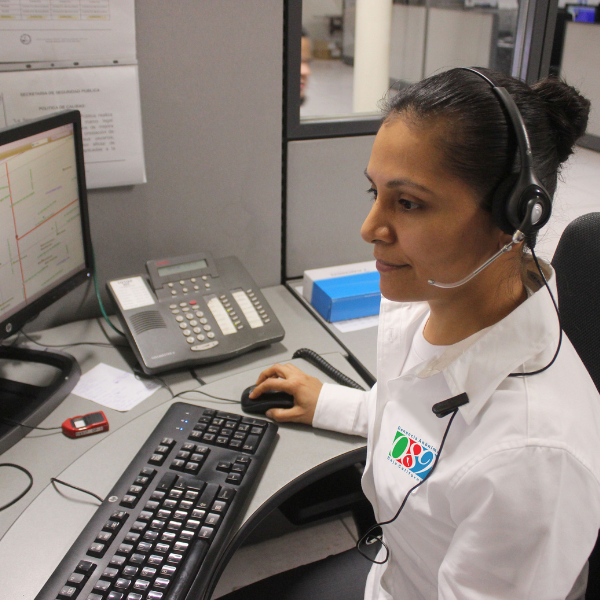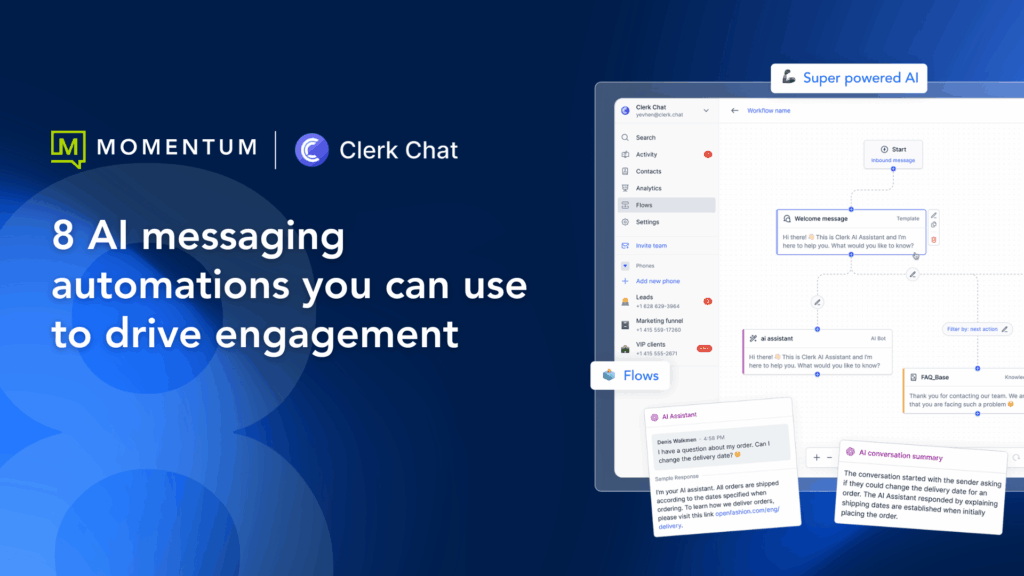How is your business staying compliant with current Enhanced 911 (E911) regulations?
Ensuring emergency services can quickly locate callers during an emergency is essential.
While many businesses rely on some form of an E911 solution — the industry continues to shift to Next Generation 911 (NG911) to improve this critical, life-saving function.
But what’s the difference between E911 and NG911? NG911 includes the same functionality as E911. However, it shifts 911 services from analog to IP-based infrastructure, completely bypassing the soon-to-be-obsolete Public Switched Telephone Network (PSTN).
At a high level, NG911 allows for:
Streamlined data sharing between PSAPs
Improved emergency response times
Better call routing
Increased reliability
The capacity to share text, photos, and video with a public safety answering point
Location data is transmitted immediately using Presence Information Data Format-Location Object (PIDF-LO).
Keep reading to learn more about what’s driving the push for more accurate call location reporting for calls, a breakdown of current regulations, tips for getting E911 right, and more.
What is E911? And Why Is It Important?
E911 is a critical system in North America designed to automatically provide the caller’s location to 911 dispatchers during emergency calls.
This system significantly enhances the ability of emergency responders to quickly and accurately locate individuals in distress, which is crucial in life-threatening situations. This is even more important for VoIP-based calls or calls made from high density buildings that previously didn’t offer accurate location tracking.
By providing precise location data, E911 ensures that emergency personnel can respond swiftly and effectively, reducing response times and potentially saving lives. The importance of E911 cannot be overstated, as it forms the backbone of public safety infrastructure, enabling a more efficient and effective emergency response.

Why Were E911 Regulations Created?
E911 regulations in the United States evolved from two important federal laws governing 911 call routing: Kari’s Law and the RAY BAUM’S Act.
Kari's Law
Kari’s Law is a piece of legislation born from tragedy.
In 2013, Kari Hunt Dunn was murdered by her estranged husband in a hotel bathroom. Her eldest daughter, who was 9 years old at the time, attempted to dial 911 four times. Unfortunately, not one of her calls went through — the hotel phone system required that guests first dial 9 to reach an external line.
The daughter next attempted to notify hotel staff, but once again this failed, as a language barrier prevented the staff from notifying hotel management.
An investigation determined Kari’s death could have been avoided if the daughter’s first 911 call had been made successfully. This led her father, Hank Dunn, to push for change. Determined to ensure that no other family would go through what he did, he worked tirelessly at the state — and later federal — level to change the law. In February 2018, he finally saw the culmination of his efforts in what became known as Kari’s Law.
Quick Highlights of Kari's Law
Kari’s Law requires organizations to configure their multi-line telephone systems (MLTS) so that dialing 911 overrides all other functionality and connects the caller immediately to the nearest PSAP. It also requires MLTs to send a notification to a central location, either onsite or off-site, that a 911 call was placed. This notification must include the following details:
When the 911 call was placed
The location of the caller provided to the PSAP
A callback number
RAY BAUM'S Act
RAY BAUM’S Act has a somewhat less tragic backstory than Kari’s Law. Named in honor of the late Ray Baum, a telecommunications lawyer and lobbyist, RAY BAUM’s Act is actually an acronym that stands for: Repack Airways Yielding Better Access for Users of Modern Services.
RAY BAUM’S Act is not exclusively concerned with 911 services. Rather, it comprises a broad set of telecommunications regulations and requirements. Section 506 of the act is what’s relevant to us here.
It mandates that the Federal Communications Commission (FCC) must consider adopting rules to ensure that all 911 calls convey a dispatchable location, regardless of the technology used. This location must include a street address, room number, floor, and any other information that may be necessary in helping first responders find the caller as quickly as possible.
The FCC published the following rules in the Federal Register on December 6, 2019:
By January 6, 2021, all fixed MTLS, interconnected VoIP systems, telephone relay services (TLS) and telephony systems must provide dispatchable location data.
By January 6, 2022, all non-fixed MTLs, VoIP, telephony systems, and TRS must provide dispatchable location data.
Why is E911 Compliance Difficult for Multi Line Telephone Systems?
The reason why so many businesses struggle with E911 compliance is threefold:
Most businesses are already dealing with both state and municipal 911 legislation: Although the two federal regulations supersede these laws, businesses must still comply with them on some level. This can leave decision-makers feeling as though they’re being pulled in multiple directions simultaneously.
Softphones and cloud-based voice communication represent a significant roadblock: Ensuring accurate location data when a call is made via a SaaS platform is a difficult task. For businesses that lack technical expertise, it may even seem insurmountable. Additionally, determining the caller’s location accurately is crucial for effective emergency response.
Sometimes 911 calls are made using personal devices at work: This can further confuse the process as a company’s E911 solution does not cover calls made from personal devices.
Why E911 Regulations Matter and the Cost of Non-Compliance
Effective E911 systems do save lives. There’s no denying this. Here are a few top reasons why these solutions are vital, as well as some of the consequences of non-compliance.
Delay Effective Emergency Responses
In an emergency, every second counts. Even a few minutes can be the difference between life and death.
Your business not only needs to alert security teams and key stakeholders that a call has been made, but also ensure that emergency responders are provided with a dispatchable location. Otherwise, you’re likely introducing an unacceptable delay in the response process.
Effective coordination with emergency services is essential to minimize response times and improve public safety.
Costly Regulatory Penalties
Failure to comply with regulations at any level, whether local, state, or federal, can see your business targeted with fines and other penalties.

In extreme cases, you may even have your phone line suspended.
There’s also the ever-present threat of litigation if it’s revealed that you were negligent with E911 compliance.
Negative Impact to Your Business Standing
There are many factors that go into whether or not a business is considered to be in good standing — E911 compliance is one of them.
If your business is not in good standing, it will be more difficult to obtain a line of credit or open a bank account. In extreme cases, your business could even be labeled delinquent and dissolved.
How Do E911 Compliance Requirements Impact Your Business?
We’ve established how failure to comply with E911 impacts your business. Now, let’s talk about how your business might be affected by your efforts to ensure compliance.
It’s important to understand: your impact will largely depend on the nature of your communications infrastructure.
If your business is heavily-reliant on legacy phone systems or uses aging copper landlines — upgrading is highly recommended. At this point, all regulations of Kari’s Law and RAY BAUM’S Act are in effect — meaning that 911 calls must be direct, instantaneous, and include dispatchable location data.
The Wireless Communications and Public Safety Act mandates that wireless carriers provide emergency services like E911, which enhances the speed and accuracy of emergency response by automatically reporting the caller’s location and phone number for mobile phones.
This applies to unified communication platforms as well as MTLS, VoIP phones, TLS, and telephony systems — regardless of platform or location.
The laws are applicable to any business with a presence in the US, too. For example, if you’re headquartered in Canada and employ a full-time remote worker in Seattle, you need to follow both RAY BAUM’S Act and Kari’s Law.
E911 Solutions and Implementation
Implementing E911 solutions requires meticulous planning and collaboration.
Businesses must ensure their phone systems are E911 compliant, which involves providing accurate location information to emergency responders. You can achieve this with a multi-line telephone systems (MLTS) that supports E911 functionality.
It’s crucial to extend E911 compliance to remote workers, who may use mobile phones and other wireless devices. This requires coordination with wireless carriers to ensure accurate location data is transmitted.
Successful implementation of E911 solutions involves a partnership between businesses, wireless carriers, and public safety entities to ensure emergency responders have the precise location information needed to respond to emergencies effectively.
E911 and Public Safety Answering Point (PSAP)
A Public Safety Answering Point (PSAP) is a local government-operated call center responsible for answering and processing emergency calls.
E911 systems are designed to provide critical location information to PSAPs, enabling emergency responders to quickly and accurately respond to emergencies.
The PSAP acts as the vital link between the caller and emergency responders, and the accuracy of the information provided by E911 systems is paramount.
The Federal Communications Commission (FCC) has established strict guidelines for E911 systems, including requirements for location accuracy and the provision of dispatchable location information. These guidelines ensure that PSAPs receive the necessary data to facilitate a rapid and effective emergency response.
9 Super Simple Tactics to Make E911 Compliance Easy
The good news is that laying the groundwork for E911 compliance isn’t particularly difficult, especially with the right partners and vendors. It just requires a bit of legwork.
Establishing a registry for public safety answering points (PSAPs) is also crucial for assessing PSAP readiness and the deployment of Enhanced 911 services.

Here are 9 quick tactics you can use to further simplify the process:
Disable prefixes in your office phone system.
Implement a crisis communication platform that allows you to transmit notifications through email, SMS, or another platform when an incident occurs.
If any of your infrastructure was installed prior to February 2020, replace it. Any hardware manufactured past that cutoff date is required to be E911 compliant.
Configure your phone system so that it transmits not only the street address of a caller, but the building, floor, and room in which they are located.
Consider skipping E911 and moving straight to NG911 adoption. Not only will this allow you to be fully compliant with both federal acts, you’ll also be prepared for when NG911 is eventually mandated at a federal level.
Ensure emergency personnel have full access to every area of your office, including those that are access-restricted.
Pay attention to state and municipal regulations, as they may feature additional mandates to which your business must adhere.
Speak to all communications vendors and service providers to ensure they understand and are capable of fulfilling your compliance needs.
Regularly test your systems to ensure that they are still compliant.
Ensure E911 Compliance with the Right Partner
Momentum has been connecting businesses with purpose-built, reliable communications solutions for nearly a decade.
We have a deep understanding of the needs and requirements of our customers — and that includes compliance. All of our solutions, including Cloud PBX and Teams Phone systems are fully compliant with both Kari’s Law and RAY BAUM’S Act.
You need a partner that is committed to ensuring your E911 compliance. One with proven nationwide communications infrastructure designed to improve public safety. See how easy your E911 compliance can be with Momentum by your side.
Bonus: How to Update E911 Location Information in Momentum's Cloud PBX
Already a Momentum customer and need to update your E911 location information in our Cloud PBX solution?
Set Provisioned Locations for Anyone Who’s Working Remotely
If someone is working from home, for instance, their provisioned location should be their home address. Similarly, if you know an employee primarily connects from a co-working space, that address can serve as their provisioned location.
This will not only ensure that emergency calls are routed to the correct PSAP, but also that emergency responders know where to go.
The establishment of a registry for public safety answering points (PSAPs) initiated by the FCC in December 2003 helps in assessing PSAP readiness and the deployment of Enhanced 911 services. You might also consider configuring your solution so that users who log in from an unfamiliar location or IP address are prompted to update their address.
Make Sure Emergency Alerts Are Enabled
You might also consider connecting the personal smartphones of remote workers to your system so you’re sent alerts when 911 is dialed on those devices.
Ensure Dynamic Location Routing is Enabled
Although Momentum’s portfolio supports this functionality, we still recommend that you regularly verify that it’s both enabled and working as intended.
It’s also imperative that you understand there are certain situations in which location routing does not function properly. Learn more about this here.



